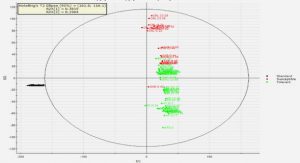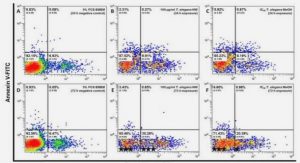Get Complete Project Material File(s) Now! »
Chapter 3 Airborne pollutants in South Africa:Current legislation and management
Atmospheric Pollution Prevention Act, 1965 (Act. 45 of 1965)
South African air pollution control is modelled on a British approach and is primarily administered nationally under the Atmospheric Pollution Prevention Act, 1965 (Act. 45 of 1965) (APPA), as amended (the Act), by the Department of Environmental Affairs and Tourism (DEAT) and specifically the office of Chief Air Pollution Control Officer (CAPCO) (Table 3.1) (Burger & Scorgie, 2000a; Annegarn & Scorgie, 1997). In addition, several other components of legislation also impact on atmospheric pollution in South Africa (Table 3.1) (Scorgie, 2001a). Prior to April 1995, the Department of National Health and Population Development (now the Department of Health), was responsible for air pollution control (Annegarn & Scorgie, 1997)
Chief Air Pollution Control Officer (CAPCO)
The amended Atmospheric Pollution Prevention Act has established the office of Chief Air Pollution Control Officer (CAPCO), which is responsible for administering compliance with legislation and the issuing of permits for Scheduled Processes (as defined by the Act) that may impact on air quality (Scorgie, 2001a; Burger & Scorgie, 2000a; Annegarn Scorgie, 1997; Turner et al., 1995; Glazewski, 1989). CAPCO publishes emission limits and ambient concentration guidelines for Sulphur dioxide (SO2), Nitrogen oxides (NOx), Lead (Pb), particulates (TSP, PM10), Carbon monoxide (CO) and ozone (O3) with no provision being made for ambient air quality standards or emission standards (Scorgie, 2001a; Annegarn & Scorgie, 1997; Turner et al., 1995). Although these guidelines are aimed at protecting human health and welfare, they can be used as standards or compliance values by which ambient air quality is assessed (Scorgie, 2001a; IUAPPA, 1991 cited in Turner et al., 1995: 9).
One of the principles of environmental policy, both locally and internationally, is to adopt an emission strategy that is used to ultimately establish limits on emissions for specific groups of sources (Burger & Scorgie, 2000a). CAPCO makes use of the Best Practicable Means (BPM) (achievable measures) concept, which is distinguishable from the Best Available Control Technology (BACT) approach, where the emphasis is on reducing emissions based on state-of-the-art technology without a major consideration of capital and operating costs (Burger & Scorgie, 2000a). Under the Atmospheric Pollution Prevention Act, provincial tiers of government are not involved in air pollution control (Annegarn & Scorgie, 1997). However, there has been a move toward devolving authority from a national level; by 2001 air pollution management control was transferred to provincial level in the North West Province and for the Durban-Pietermaritzburg area5*. The Air Pollution Control Officer (APCO) for North West province was appointed by the Minister of Environmental Affairs and Tourism in the province’s Department of Agriculture, Conservation and Environment (DACE)8. APCO’s duties for the North West province are the same as the national Chief Air Pollution Control Officer8.
Air pollution permit requirements
Any operator of a Scheduled Process is required to hold a permit or be liable to criminal prosecution (Glazewski, 1989). Platinum mining has several Scheduled Processes that require a permit2:
- Roasting Process (No. 27 of the Second Schedule),
- Vanadium Process (No. 60 of the Second Schedule),
- Sulphuric Acid Process (No. 1 of the Second Schedule), and
- Waste Incineration Process (No. 39 of the Second Schedule).
CAPCO issues an operating permit for an individual case after discussions with the industry and affected local authority (Burger & Scorgie, 2000a). A permit is issued on the assumption that emissions of atmospheric pollution are below prescribed levels (Burger & Scorgie, 2000a; Annegarn & Scorgie, 1997; SRK, 1997; Turner et al., 1995; Glazewski, 1989). When determining permitted pollution levels, CAPCO has discretion under the Atmospheric Pollution Prevention Act to take into account available technology, costs of abatement, age of a plant, the available control options and local and special circumstances (Burger & Scorgie, 2000a; Annegarn & Scorgie, 1997; Glazewski, 1989). The effective operation of the Act is largely dependent on the opinion of CAPCO, rather than the imposition of statutorily laid-down standards (Scorgie, 2001a; Glazewski, 1989). While the current approach allows for flexibility and cooperation between government and industry, there are doubts as to whether the approach is effective (Glazewski, 1989).
Problems with air pollution control structures and legislation in South Africa
Administration of air pollution control in South Africa has become highly fragmented (Scorgie, 2001a; Annegarn & Scorgie, 1997). At a national level, the Department of Environmental Affairs and Tourism, the Department of Health, the Department of Water Affairs and Forestry and the Department of Minerals and Energy are responsible for implementing various sections of the Atmospheric Pollution Prevention Act (Annegarn & Scorgie, 1997). Comprehensive control of air pollution at a local level is hindered due to the division of responsibilities for implementing regulations between national and local authorities (Annegarn & Scorgie, 1997). The fragmented organisational structure of air pollution legislation and control has several adverse consequences (Scorgie, 2001a; Annegarn & Scorgie, 1997):
- Discrepancies, anomalies and ineffectiveness exist in South African air pollution control. Not all pollution sources are covered in legislation; various sources of fugitive particulate emissions such as roads, open pit mining, construction and demolition and agriculture are omitted. Emissions from biomass burning, aviation, and toxic substance transport and spills are also overlooked. Furthermore, little emphasis is placed on fugitive emissions and no standards exist for non-criteria pollutants (g. carcinogens, odourants);
- Air pollution control is based entirely on source-based controls rather than on the achievement and maintenance of ambient air quality standards;
- Not enough attention has been paid to exposure levels (g. human exposure to domestic coal burning emissions in townships);
- Regulations are applied inconsistently, and there is no regular review of the threshold levels (particulate control is only applicable to declared dust control areas; the Government mining engineers are responsible to control mine dumps, while vehicle emissions control is clumsy and time-consuming);
- Air pollution considerations are afforded a low priority in planning;
- Answers required for air pollution management decisions can not be obtained quickly;
- Air pollution control personnel do not form a coherent and recognisable body and consequently lack both status and authority and have few prospects for promotion. Furthermore, inadequate staffing at national level has severely limited the effective enforcement of the legislation; and
- The national authority is not bound in all respects by its own legislation, which provides the potential for inconsistencies and subjectivity in the decision making process.
New legislation
As a result of the problems mentioned in section 3.1.2 the Integrated Pollution Control (IPC) Project of DEAT was initiated in 1993 to facilitate a review of governmental functions and structures concerned with pollution control, and to initiate a process of restructuring the regulatory system to produce a more effective pollution control system (IN95b) (Annegarn & Scorgie, 1997). The IPC Air Work Team was responsible for drafting a new approach to air pollution control amenable to Integrated Pollution Control (Annegarn & Scorgie, 1997). The White Paper on Integrated Pollution and Waste Management was published in March 2000 and indicated a shift from a source-based to a receiving-environment approach (Table 3.1) (Scorgie, 2001a). Four tiers of authority were suggested for the control of air pollution, namely (Annegarn & Scorgie, 1997):
- A single national agency that has the mandate for the coordination of air quality management. Functions of the national agency would include legislation, transboundary pollution management, international agreements, dispute resolution and the demarcation of local air quality management areas;
- Provincial authorities, who are charged with executive powers for the implementation of control, which may be delegated to lower tiers where the capacity exists;
- Metropolitan authorities identified by the national agency, who are responsible for local air quality management areas; and
- Local authorities outside metropolitan areas that derive certain powers from provincial authorities that are proportionate to their abilities.
A process to set national air quality standards was initiated, but suspended by the SABS (South African Bureau of Standards) pending further guidance by the DEAT (Scorgie, 2001a).
The National Environmental Management: Air Quality Bill
- After renewed efforts, the National Environmental Management: Air Quality Bill (which will repeal the Atmospheric Pollution Prevention Act, 1965) was published for comment and inputs from interested parties and the general public in April 2003 (DEAT, 2003). The main object of the new Act is to protect, restore and enhance the air quality in South Africa, having regard to the need to ensure sustainable development, by providing (DEAT, 2003):
- The framework for governance of air quality management through the establishment of national norms and standards;
- A regulatory framework for an air quality management planning and reporting regime;
- Numerous regulatory instruments for the control of air pollution; and
- A comprehensive approach to compliance and enforcement.
Abstract
Acknowledgements
Table of contents
List of illustrations
List of tables
Chapter 1: Introduction and background
1.1 Sustainable development in the mining industry
1.2 Composition of air
1.3 Defining air pollution
1.3.1 Natural versus anthropogenic pollution
1.3.2 Primary versus secondary pollution
1.3.3 Criteria vs. non-criteria pollutants
1.3.4 Scale and transport of air pollution
1.3.5 Absorption and dispersion of pollutants in the atmosphere
1.3.5.1 Looping
1.3.5.2 Fanning
1.3.5.3 Fumigation
1.3.5.4 Trapping
1.3.5.5 Coning
1.3.5.6 Lofting
1.4. History of air pollution research
1.4.1 The global situation before the industrial revolution
1.4.2 The industrial revolution
1.4.3 The twentieth centu
1.5. Air pollutants and their effects
1.5.1. Effects on human health and welfare
1.5.1.1 Respiratory and lung diseases
1.5.1.2 Immune system
1.5.1.3 Skin
1.5.1.4 Central nervous system
1.5.1.5 Cardiovascular systems
1.5.1.6 Carcinogenic effects
1.5.2 Effects on vegetation and animals
1.5.3 Effects on materials and structures
1.5.4 Effects on the atmosphere
Chapter 2: The current international situation and management of airborne pollutants
2.1 Defining air quality management
2.2 Components of an Air Quality Management Plan
2.3 International management of air quality
2.4 New or alternative directions
2.5 Ambient air quality guidelines and standards
2.6 Measuring air pollution
2.7 Monitoring of air pollutants
2.8 Air pollution modelling and prediction
2.9 Air pollution control
2.10 Closing
Chapter 3: Airborne pollutants in South Africa: Current legislation and management
3.1 Atmospheric Pollution Prevention Act, 1965 (Act. 45 of 1965)
3.2 New legislation
3.3 Existing local air quality management structures
3.4 Closing
Chapter 4: Pollution quantification in the Rustenburg area
4.1 Introduction
4.2 Regional setting
4.3 Regional emission inventory in the Rustenburg area
4.4 The research problem
Chapter 5: Airborne Pollutants in the Rustenburg area: Contributors and management until the end of 2001
5.1 Anglo Platinum: Waterval Smelter
5.2 Impala Platinum
5.3 Lonmin Platinum
Chapter 6: Airborne pollutants in the Rustenburg area: The contributors and management from 2002
6.1 Anglo Platinum
6.2 Impala Platinum
6.3 Lonmin Platinum
6.4 Other role players in the Rustenburg region
Chapter 7: Review and synthesis of airborne particulate pollution management at Platinum Smelters in the Rustenburg region, North West Province
7.1 Introduction
7.2 Safety, Health and Environmental Policy (SHE Policy)
7.3 Air quality management in the Environmental Management Programme Report
7.4 Formal procedures for management of particulate emissions
7.5 Permit requirements
7.6 Structure of environmental departments / relationships with other departments
7.7 Changes in technology used to control particulate emissions
7.8 Additional control measures / management practices
7.9 Contingency plans
7.10 Monitoring particulate emissions
7.11 Gravimetric sampling
7.12 Maintenance
7.13 Quality and availability (accessibility) of data
7.14 Reporting
7.15 Training
7.16 Closing
Chapter 8: Rustenburg Regional Air Quality Management Plan (RAQMP)
8.1 Introduction
8.2 Summary: Rustenburg Air Quality Management Plan (RAQMP)
8.3 Discussion of the Rustenburg Air Quality Management Plan (RAQMP)
8.4 Closing
Chapter 9: Concluding remarks
References
Appendix
GET THE COMPLETE PROJECT






